Code Conundrums: Plumbing
Code interpretations and commenting on building codes are beyond the purview of the home inspector during an inspection. However, background knowledge of the codes can be helpful in many instances.
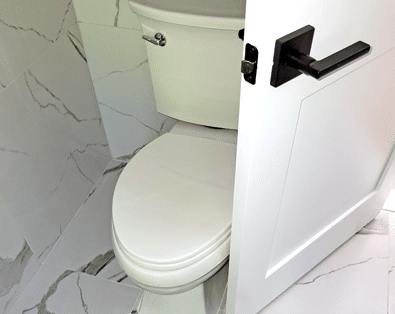
REAL-LIFE CASES
Plumbing Fixture Installations. Pre-purchase home inspections were performed recently on two houses that were new construction. In both cases, the houses have their Certificate of Occupancy from the local Authority Having Jurisdiction (AHJ). Each AHJ was a different municipality.
Case 1: This house is new construction and the toilet in the master bathroom has approximately 17 inches of clearance in front to the vanity, which contains the lavatory.
Case 2: This house is also new construction and the toilet in the master bathroom interferes with the operation of the door into the bathroom.
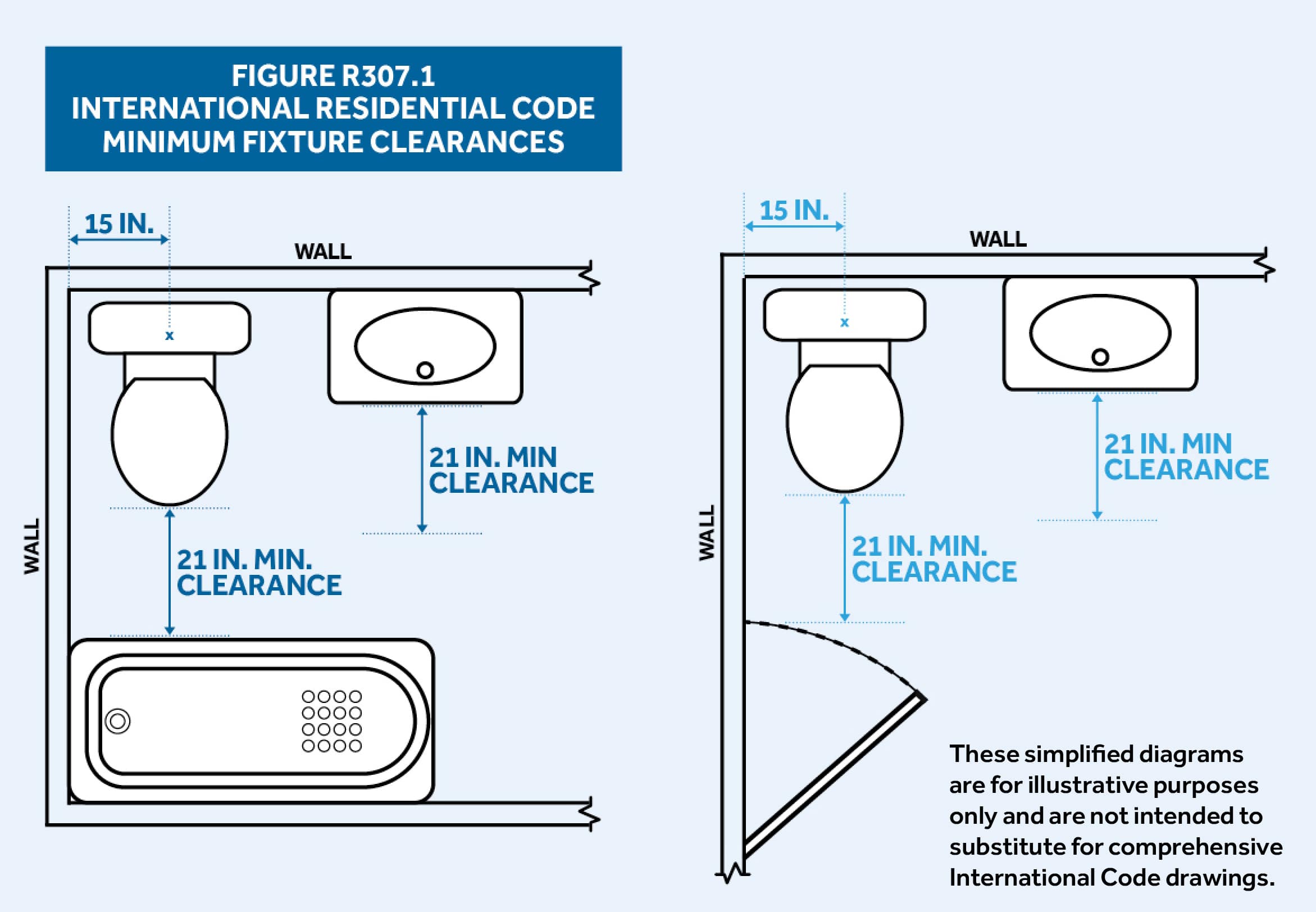
Relevant Code Section
Toilet, Bath and Shower Spaces
(Definition from 2021 International Residential Code):
R307.1 Space Required:Fixtures shall be spaced in accordance with Figure R307.1, and in accordance with the requirements of Section P2705.1 (Plumbing Fixture Installation).
R307.2 Bathtub and Shower Spaces: Bathtub and shower floors and walls above bathtubs with installed showerheads and in shower compartments shall be finished with a nonabsorbent surface. Such wall surfaces shall extend to a height of not less than 6 feet above the floor.
P2705.1.5 Plumbing Fixture Installation: Water closets, lavatories, and bidets. A water closet, lavatory, or bidet shall not be set closer than 15 inches from its center to any side wall, partition, or vanity or closer than 30 inches center-to-center between adjacent fixtures. There shall be a clearance of not less than 21 inches in front of a water closet, lavatory, or bidet to any wall, fixture, or door.
P2705.1.6 Plumbing Fixture Installation: The location of piping, fixtures, or equipment shall not interfere with the operation of windows or doors.
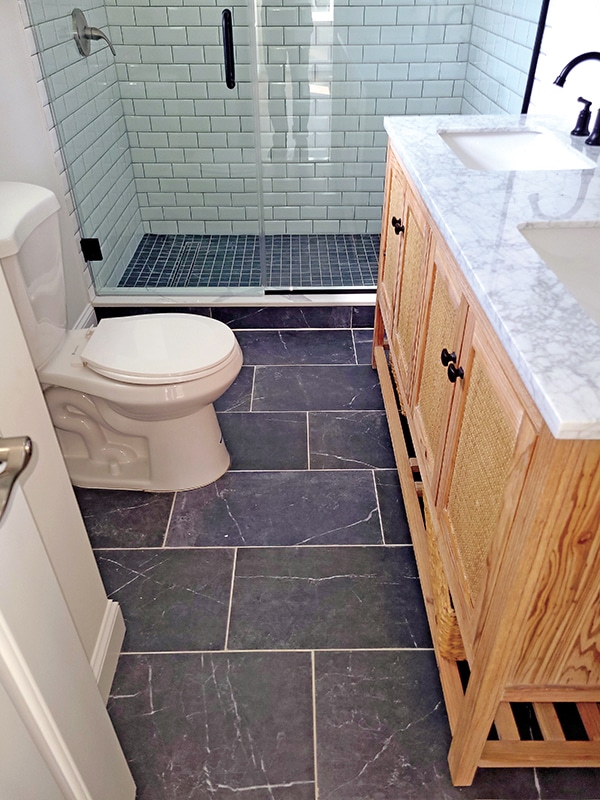
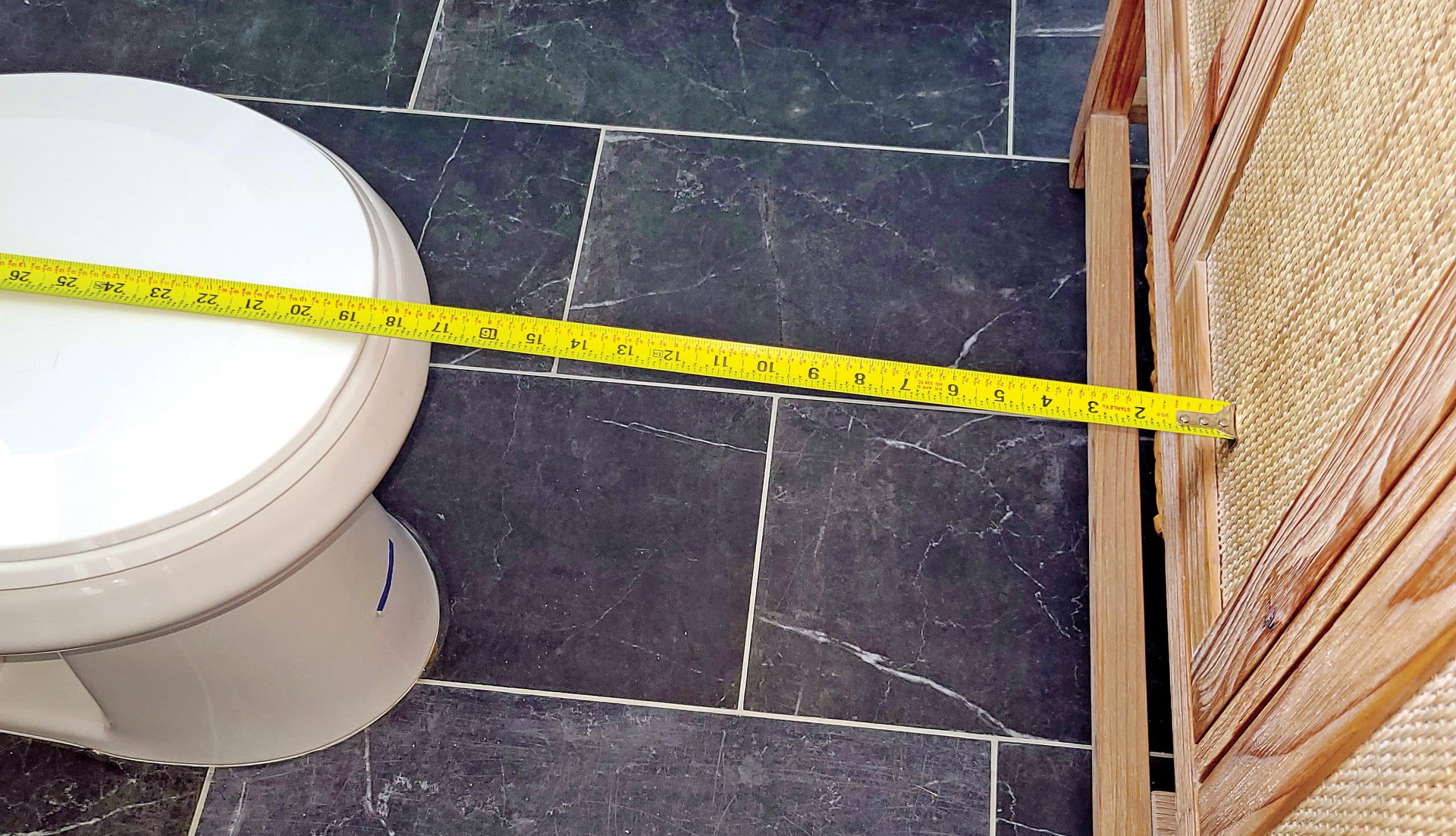
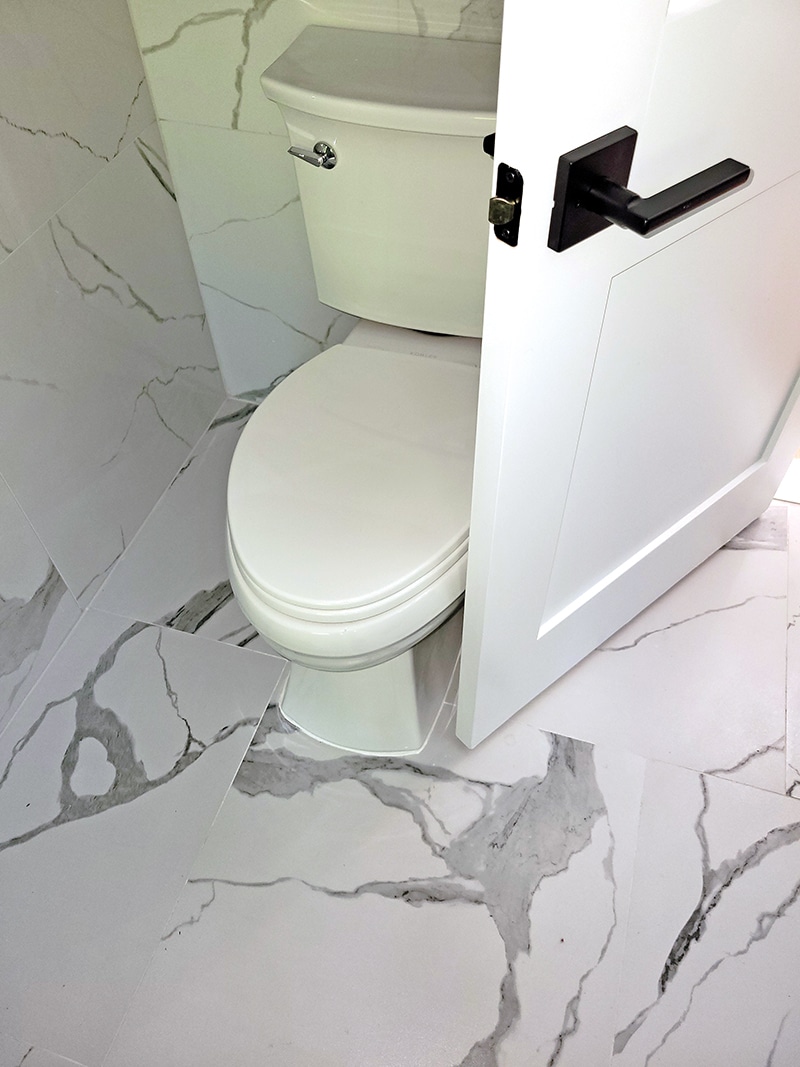
INSIGHT
Each case above is in violation of the building code requirements as per the International Residential Code, yet have their Certificates of Occupancy. In Case 1, both the toilet and the lavatory have less than the required clearances as stated in the code. In Case 2, the toilet clearly interferes with operation of the door into the bathroom.
A home inspector, as per the ASHI Standards of Practice (SOP), is required to inspect readily accessible, visually observable, installed systems and components listed in the SOP. The plumbing section states that the inspector shall inspect interior drain, waste and vent systems, including fixtures.
In the General Exclusions section of the SOP, the home inspector is not required to determine compliance of systems and components with past and present requirements and guidelines including codes, regulations, laws, ordinances, specifications, installation, and maintenance instruction, etc.
All home inspectors will typically be evaluating the operation of the plumbing fixtures, including toilets and lavatories, during the course of a home inspection. Do you want to point out to the client that the fixtures are not in compliance with code or just state that best practice is to provide additional clearance and to ensure the door does not impact the toilet when opened? Is it best not to state anything and rely on the Certificate of Occupancy if the fixtures are functioning properly?
Most home inspectors are thorough and conscientious and want to provide the best service for their client. The home inspector is put in that all too familiar unenviable position between competing interests, in this case balancing the safety of your clients versus code official approval. The issue, as always, comes when the owner states that they have a Certificate of Occupancy and that they are not going to address these concerns.
As someone partially responsible for caregiving to elderly parents, I can attest proper fixture installation and clearances are extremely important for safe use of the bathroom for all homeowners and guests. Home inspectors do not want to receive a phone call or email stating the client cannot use the toilet or lavatory properly and that the report should have noted this, or that the toilet was damaged due to door impact and needs to be replaced.
Furthermore, most bathroom renovations in existing homes are done without permits or any review by the AHJ with some exceptions. Is it the home inspector’s responsibility to note that the renovation the contractor or homeowner performed has been done improperly?
The home inspector can call this out in their report that it presents a concern and potential safety hazard in their opinion while not becoming involved in a code interpretation. The home seller and client are then put on notice that the issue should be addressed, reducing any potential liability for the home inspector. Being able to base your decisions on code knowledge can increase your credibility while reducing liability. Note: Some states have modified their own versions of the International Residential Code and may have different requirements.
Opinions or statements of authors are solely their own and do not necessarily represent the opinions or positions of ASHI, its agents, or editors. Always check with your local governmental agency and independently verify for accuracy, completeness, and reliability.
To Read the Full Article
ASHI offers its members unparalleled resources to advance their careers. ASHI offers training for inspectors at all levels of knowledge and experience, including resources about all major home systems. Members benefit from a vast network of experienced professionals, providing a community for mentorship and knowledge sharing..
In this Issue
Tail Coverage
What is a Google Business Profile?
Working with the Best of Them
Mold Matters
Postcards from the Field
Advertisement
InspectorPro Insurance
FIND A HOME
INSPECTOR
Professional Networking
Grow your professional network, find a mentor, network with the best, and best part of the community that’s making home inspection better every day.
